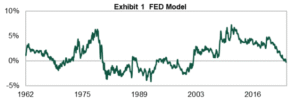Abnormal FX Returns and Liquidity-Based Machine Learning Approaches
Foreign exchange (FX) markets are shaped by liquidity fluctuations, which can trigger return volatility and price jumps. Identifying and predicting abnormal FX returns is critical for risk management and trading strategies. This post explores two advanced approaches that allow investment professionals to better understand and anticipate shifts in market conditions. By integrating liquidity metrics with predictive algorithms, investors can gain deeper insights into return behavior and improve risk-adjusted decision-making. The first approach focuses on outlier detection, where robust statistical methods isolate periods with exceptionally large price movements. These detected outliers are then predicted using machine learning models informed by liquidity metrics, alongside key macroeconomic indicators. The second approach targets liquidity regimes directly, employing regime-switching models to differentiate high-liquidity from low-liquidity states. Subsequent return analysis within each regime reveals how risk is magnified in lower-liquidity environments. Observed patterns in major currency pairs suggest that periods of reduced liquidity coincide with abnormal price behavior. Researchers like Mancini et al. and Karnaukh et al. have demonstrated that liquidity risk, often measured through bid–ask spreads or market depth, is a priced factor. Others, such as Rime et al., highlight how liquidity and information proxies can improve FX forecasting. Building on these findings, there are two possible ways to tackle abnormal returns by leveraging machine learning methods and liquidity indicators. Tackling Abnormal Returns Outliers The first approach is to treat abnormal weekly returns, i.e., outliers, as the primary target. Practitioners could collect weekly returns of various currency pairs and apply either simple robust methods like the median absolute deviation (MAD) or more sophisticated clustering algorithms like density-based clustering non-parametric algorithm (DBSCAN) to detect outlier weeks. Once identified, these abnormal returns can be forecast by classification models such as logistic regression, random forests, or gradient boosting machines, which make use of liquidity measures (bid–ask spreads, price impact, or trading volume) as well as relevant macroeconomic factors (e.g., VIX, interest rate differentials, or investor sentiment). The performance of these models can then be evaluated using metrics such as accuracy, precision, recall, or the area under the ROC curve, ensuring that the predictive power is tested out of sample. Liquidity Regimes The second approach shifts the emphasis to the identification of liquidity regimes themselves before linking them to returns. Here, liquidity variables like bid–ask spreads, trading volume, or a consolidated liquidity proxy are fed into a regime-switching framework, sometimes a hidden Markov model, to determine states that correspond to either high or low liquidity. Once these regimes are established, weekly returns are analysed conditional on the prevailing regime, shedding light on whether and how outliers and tail risk become more likely during low-liquidity periods. This method also gives insight into transition probabilities between different liquidity states, which is essential for gauging the likelihood of sudden shifts and understanding return dynamics more deeply. A natural extension might combine both approaches by first identifying liquidity regimes and then predicting or flagging outliers using specific regime signals as input features in a machine learning setup. In both scenarios, challenges include potential limitations in data availability, the complexity of calibrating high-frequency measures for weekly forecasts, and the fact that regime boundaries often blur around macro events or central bank announcements. Results may also differ when analysing emerging markets or currencies that typically trade at lower volumes, making it important to confirm any findings across a variety of settings and apply robust out-of-sample testing. Ultimately, the value of either approach depends on the quantity and quality of liquidity data, the careful design of outlier or regime detection algorithms, and the ability to marry these with strong predictive models that can adapt to shifting market conditions. Key Takeaway Navigating FX market volatility requires more than traditional analysis. Liquidity-aware models and machine learning techniques can provide an edge in detecting and forecasting abnormal returns. Whether through outlier detection or liquidity regime modeling, these approaches help investors identify hidden patterns that drive price movements. However, data quality, model calibration, and macroeconomic events remain key challenges. A well-designed, adaptive framework that integrates liquidity dynamics with predictive analytics can enhance investment strategies and risk management in evolving FX markets. source
Abnormal FX Returns and Liquidity-Based Machine Learning Approaches Read More »













